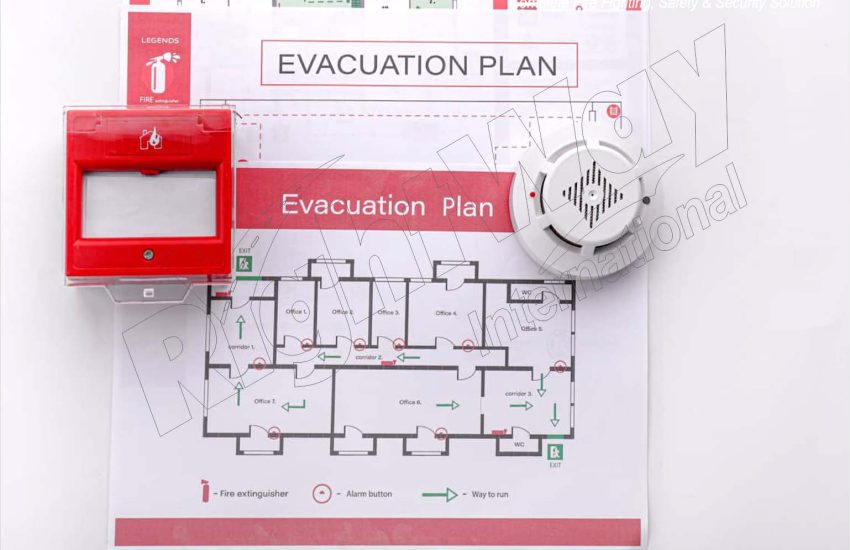Evacuation Plan is a crucial component for ensuring safety in any building or facility. Whether it’s a home, office, school, or industrial site, having a well-designed emergency evacuation plan can make all the difference in protecting lives during an unforeseen event. This detailed guide will walk you through the essential elements of creating an effective evacuation plan, with a focus on emergency preparedness, safety protocols, and evacuation procedures.
What is an Evacuation Plan?
An evacuation plan is a structured blueprint outlining the procedures, routes, and resources needed to safely evacuate people from a building or area in the event of an emergency. The plan typically includes the identification of exits, assembly points, communication procedures, and roles and responsibilities for staff or occupants.
Importance of an Evacuation Plan
Having a clear and actionable evacuation plan can save lives during various emergencies, such as fires, earthquakes, floods, or chemical spills. A well-prepared evacuation plan ensures that everyone knows what to do, where to go, and how to remain calm in the face of a crisis.
Key Elements of an Effective Evacuation Plan
1. Clear Evacuation Routes
Designating multiple evacuation routes is essential to ensure that individuals can safely exit the building, even if one route is blocked or compromised. Exit signs, emergency lighting, and clear pathways should be marked and visible at all times.
2. Emergency Assembly Points
An evacuation plan should include safe assembly points located away from potential hazards such as falling debris or traffic. These areas must be easily accessible to all occupants, including those with mobility impairments. The assembly points should be marked and communicated in advance.
3. Communication Procedures
Effective communication during an emergency is key to coordinating evacuations. Ensure that everyone is aware of how to receive and respond to emergency alerts. This might involve alarm systems, public address systems, or mobile alerts. Consider assigning specific individuals to manage communication efforts and maintain contact with emergency responders.
4. Roles and Responsibilities
Assign specific roles and responsibilities to personnel or building occupants. These could include directing others to exits, assisting individuals with disabilities, or managing communication. Having a designated evacuation leader can streamline the process and reduce confusion.
5. Evacuation Timing and Drills
Practicing your evacuation plan through regular fire drills, safety drills, or emergency exercises will help ensure that everyone is familiar with the procedures. Drills also help identify potential problems with the plan, such as blocked exits or unclear signage, allowing you to address them before a real emergency occurs.
6. Special Considerations
Take into account individuals with specific needs. This may include people who are elderly, have disabilities, or require medical attention. Make sure that your evacuation plan accommodates these individuals, providing necessary assistance and resources to ensure their safety.
7. Post-Evacuation Procedures
Once everyone has safely evacuated, it’s essential to conduct a headcount to ensure no one is left behind. Establish a reporting protocol so that those in charge can inform emergency responders of any missing persons or hazards.
Common Types of Emergencies Requiring Evacuation
While most evacuation plans are designed for fire emergencies, they should also address a range of other scenarios. Common types of emergencies requiring evacuation include:
- Fire emergencies: An uncontrollable fire or smoke in a building.
- Natural disasters: Earthquakes, floods, or hurricanes may necessitate evacuation due to structural damage or unsafe conditions.
- Chemical or gas leaks: Evacuations are required when hazardous chemicals or gases are released in a building.
- Active shooter or security threats: In situations involving a security threat, quick evacuation to a safe location is essential.
- Terrorist attacks or explosions: In rare instances, evacuation may be necessary due to the threat of bombs or other explosive devices.
Best Practices for Developing an Evacuation Plan
1. Involve All Stakeholders
Ensure that employees, tenants, or residents are involved in the planning process. Their feedback can help identify blind spots in the evacuation plan. Collaborating with local emergency services or safety experts can also enhance the plan’s effectiveness.
2. Make the Plan Accessible
Your evacuation plan should be easy to understand. Avoid technical jargon and use simple instructions. Display evacuation maps in common areas, and ensure that they are visible and up to date.
3. Ensure Adequate Signage
Install clear exit signs, directional arrows, and emergency lighting to guide people through the evacuation process. Proper signage helps people navigate the building quickly and safely.
4. Review and Update Regularly
An evacuation plan is a dynamic document that should be reviewed and updated regularly. Changes in building layout, occupancy, or regulations may require adjustments. Review the plan annually or whenever there are significant changes.
5. Use Technology to Enhance Safety
Modern technology can play a significant role in improving evacuation plans. Mobile apps, emergency notification systems, and real-time tracking tools can assist in managing evacuation efforts more efficiently.
Conclusion
An effective evacuation plan is essential for ensuring the safety and well-being of everyone in a building or facility during an emergency. By establishing clear evacuation routes, assembly points, and communication procedures, and by regularly practicing and updating the plan, you can be confident that individuals will know how to respond quickly and safely in a crisis. Remember, preparedness is the key to minimizing risks and ensuring a swift and organized evacuation when every second counts.


